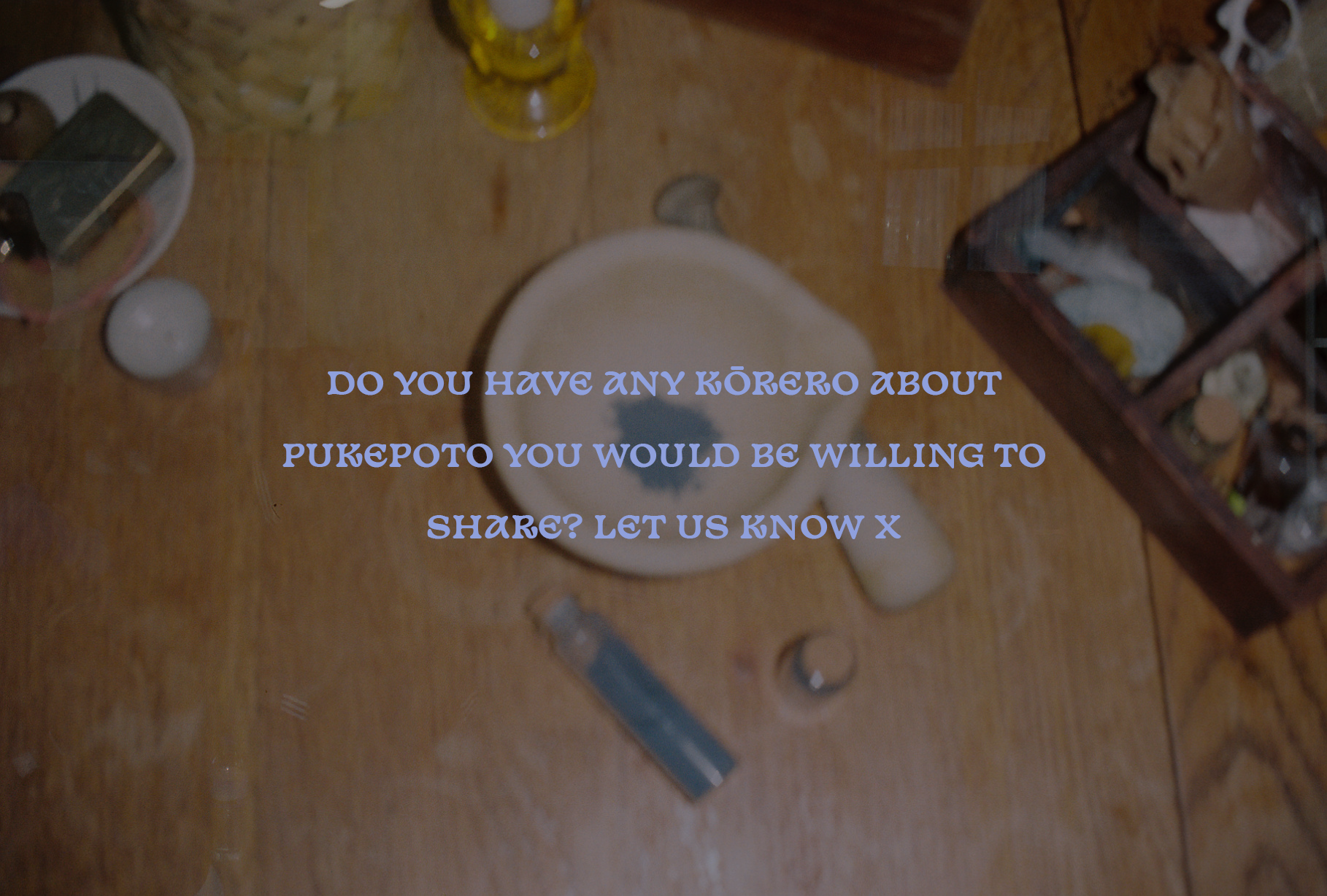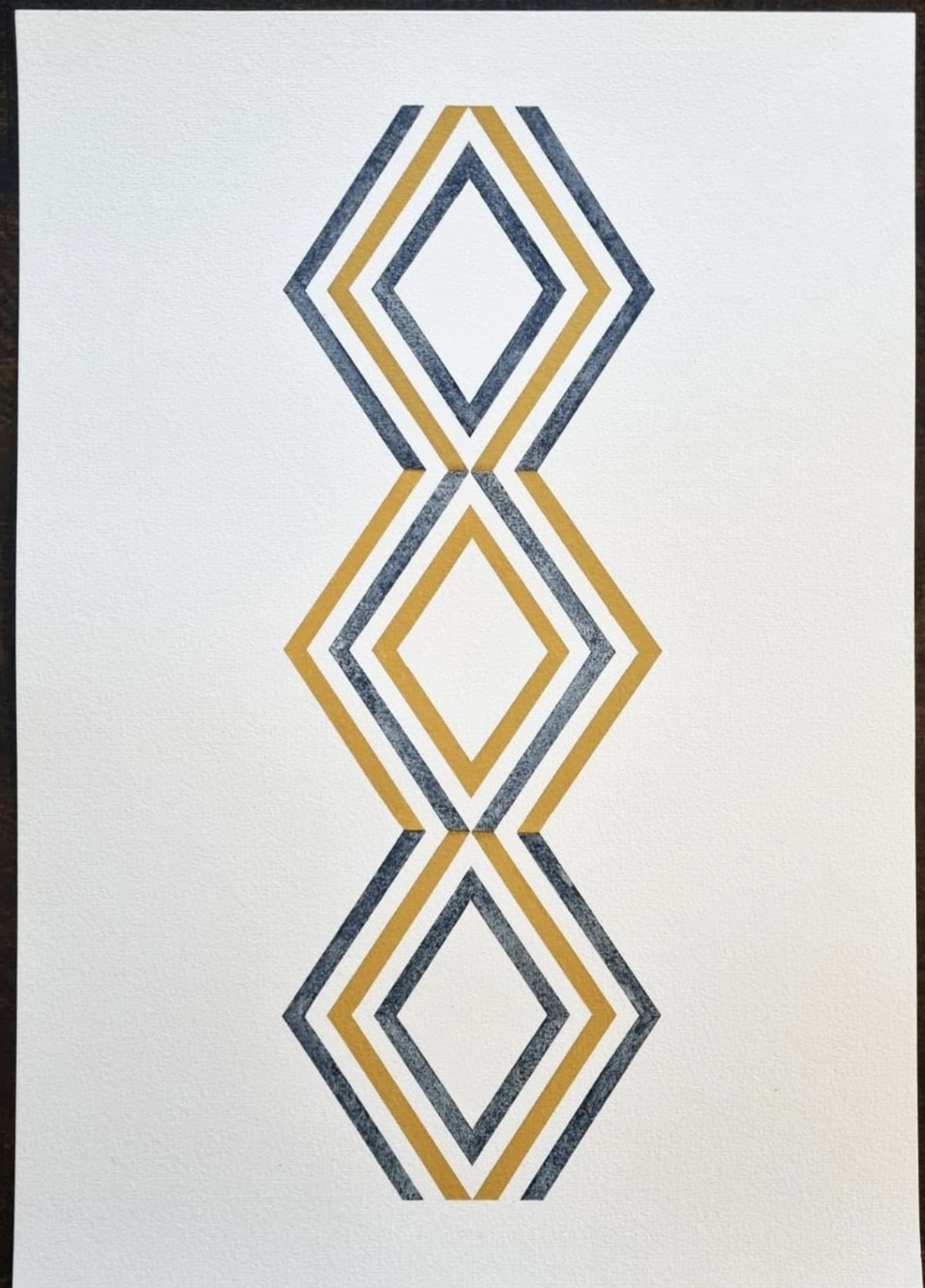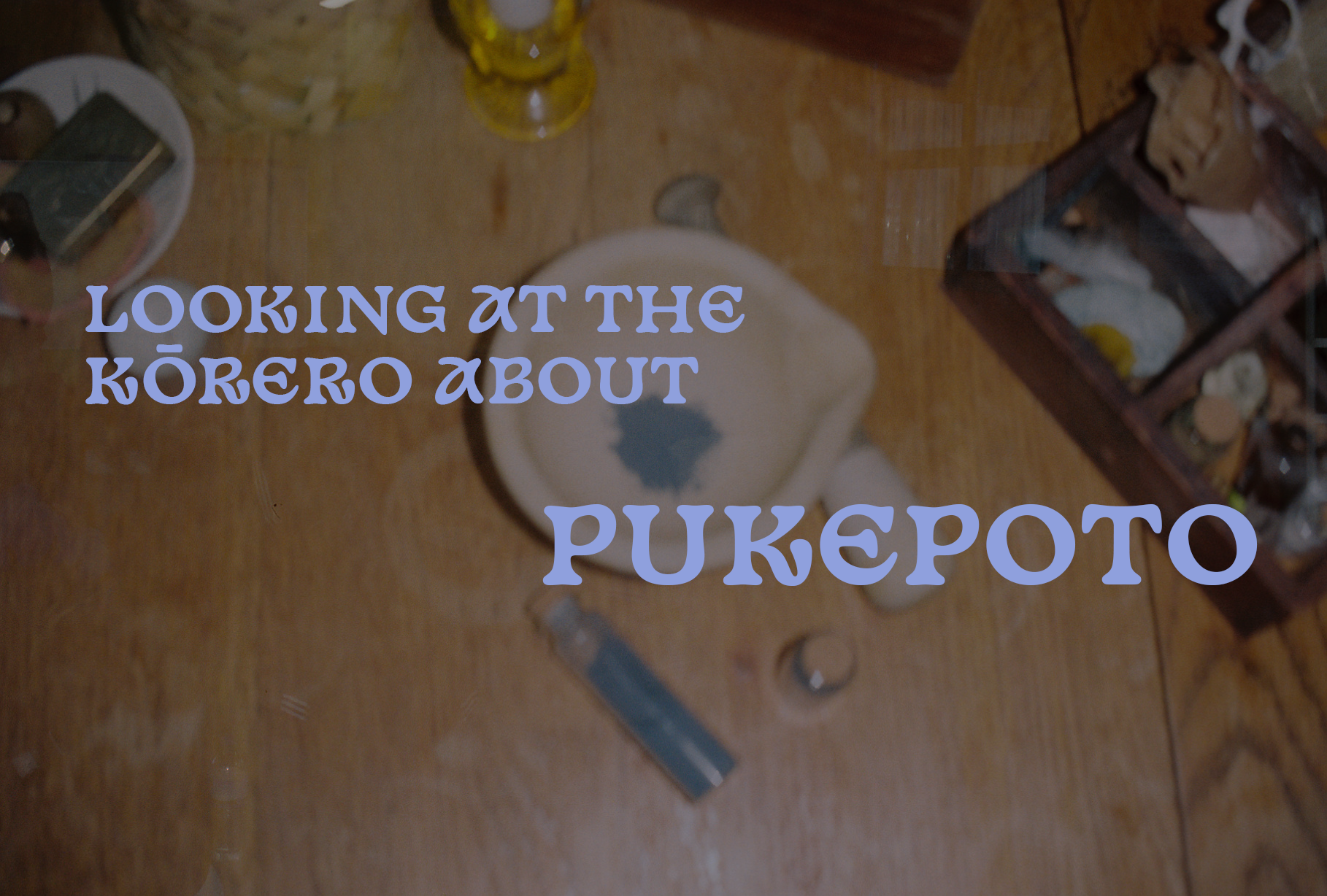
By Kahu Kutia, with Isaac Te Awa
Reading time: 20-30 mins! But we wanted to pack as much information in as we could x It’s worth digging through if you’re interested.
If you havent come across pukepoto before, it can be quite diverse in texture, and shade. Just like kōkōwai. It’s also known as vivianite, and is an iron phosphate that is formed when living matter decays in certain conditions, like in swamps. The living matter could be bugs, or animal bones, or things like pine cones.
I didn’t know about pukepoto until I was handed a tiny vial by Isaac Te Awa (Kāti Māmoe, Kāi Tahu, Waitaha, Ngāpuhi ki Whangaroa).
We call ourselves tangata whenua. We are the people of the land and we have whakapapa to the whenua that we come from. The prime example is Hineahuone who we all descend from. The more I look at it in my work, I see how our people have been separated from their connection to the whenua, their practice.
Isaac Te Awa at one of the pā harakeke where he harvests for his mahi. Turns out I double exposed the film I used to take these photos, so in the background you can also see images from Sarah’s exhibition re:place at Blue Oyster Art Project Space in Ōtepoti. How appropriate!
Some pukepoto might become more grey with time or exposure to air. But the vial of Pukepoto that Isaac gave me was this powdery dark blue. Almost chalky in texture. A really pure pigment. I found it really easy to turn in to a soft rich paint. This pukepoto was from Isaacs whenua in Murihiku.
A Dictionary of the Māori Language (1957) describes pukepoto as:
A dark-blue earth used as a pigment. Ka tia ki te raukura, ka pani ki te kokowai, ki te ngarahu, ki te pukepoto hoki.
Images supplied by Isaac, of the powdery blue pukepoto obtained from his whenua at Murihiku
Isaac wears many pōtae. His day job is curator with Taonga Māori at Te Papa Tongarewa. But outside of mahi, he’s also a maker and a toi practitioner himself across all kinds of toi. He speaks of the stark cultural differences between his Te Waipounamu side and his Ngāpuhi side, and his fortune to have grown up kind of in between both. Both his mums side and his fathers side influenced his toi practice.
So the mahi toi around rākau and wood and whakairo, that’s definitely influenced by my dad. But my mum comes into that too. She's from one of those whānau that did all the hand crafts. The sewing, the knitting, the crochet. The fibre craft of that whanau has influenced my mahi now. My main background is in raranga and whatu.
A lot of his knowledge was tiny things learnt from his whānau, and his own experiments and research. But he’s also since been mentored by the likes of Veranoa Hetet and Rangi Kipa. His learning never stops.
I’m currently learning puoro. Currently learning maramataka, currently learning to explore whenua and earth pigments. Im learning heaps of stuff eh... But really, I think it comes from that deep sense of Māori to connect to their environment around them and it’s the resources. What you have available you explore, because it connects you to where you are and it nourishes your wairua as well.
It’s quite hard to find kōrero about pukepoto on the internet. Most of the kōrero around whenua pigments focuses on kōkōwai so we dont have as many examples of how it might have been used traditionally. I know Isaac knows a few things about whenua pigments, so I ask him about it.
To put it simply, whenua was used to adorn our bodies and our taonga. But to go deeper than that, all our Māori art forms connect to the whenua in some way.
We say raranga starts in the bush, but it actually starts in the whenua the bush grows in. Its as simple as that. When we look at moko, moko evolved in Aotearoa based on the rū. The swirls of iron on the top of the swamp. It’s not just a matter of taking whenua colours and putting them on yourself, they’re tied to every single art form you can possibly think of in te ao Māori and we dont give it enough credit. Even our whakairo were buried in swamps to stain them black or change the colours. Whale bone was buried in the one to create, to change the colour of it. Our people literally wear their whenua and each whenua is a finger print that can tell where they’re from.

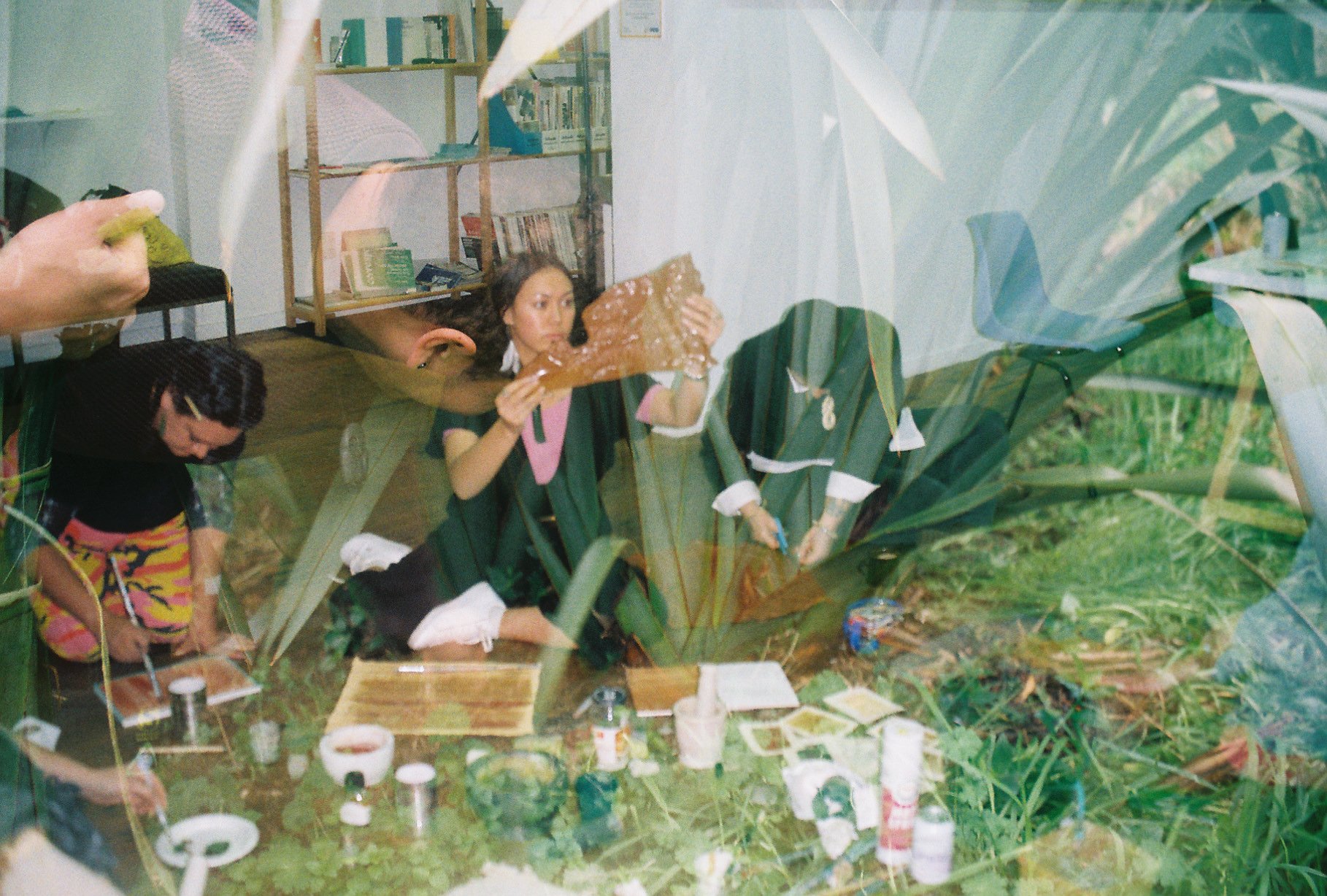
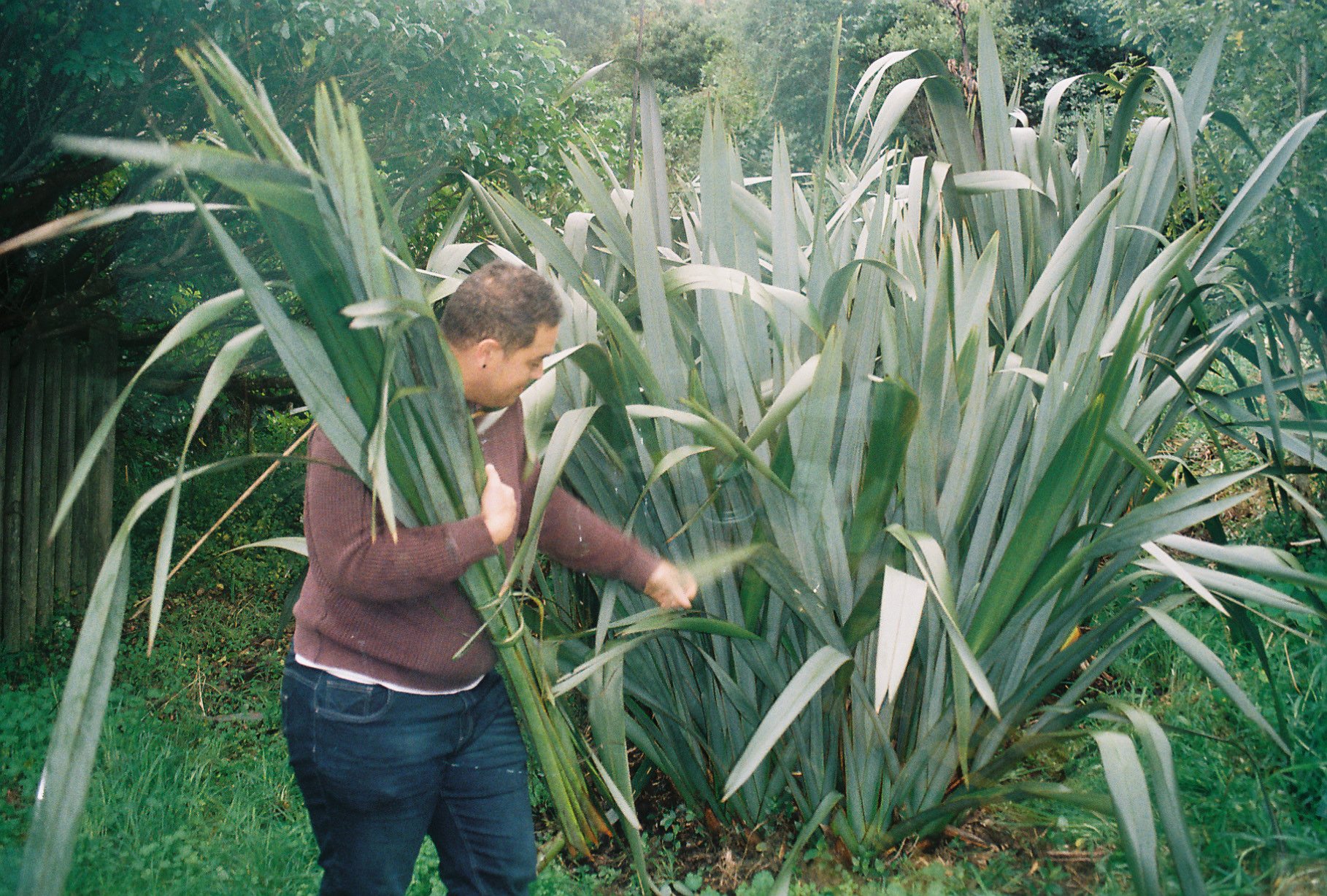
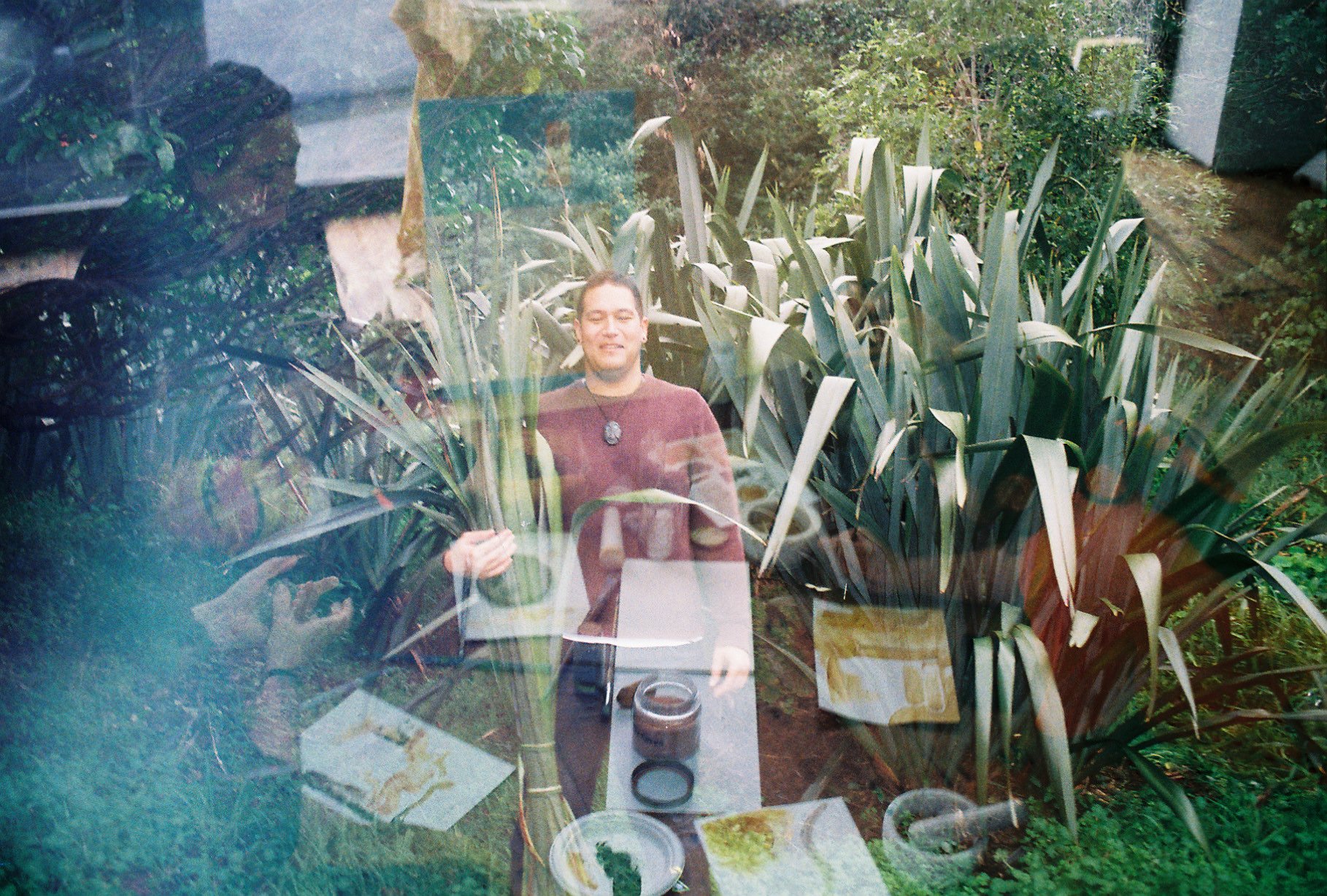
If you’re reading this you probably know a little bit already about how significant whenua was to our tīpuna. But pukepoto is quite hard to find knowledge on. At least in Aotearoa.
This article talks about how young women were “fond” of dabbing small amounts of pukepoto on their cheeks. Or any red pigments, and berries like that of the kōkaha.
There’s also a few pieces of kōrero around “tuhi māreikura” as a practice of adorning high-born women in some rohe with pukepoto.
Like this resource which talks about the practice for māreikura in Ngāti Kahungunu.
Another resource refers to this same tuhi māreikura practice as part of “peace ceremonies”. It describes markings like those of a pōhutukawa tree, with the buds painted in kōkōwai, and the branches in pukepoto.
There’s also a pūrākau where pukepoto was used to mark the legs of Warea, when she committed adultery against her husband Manaia.
It seems like it definitely had a cosmetic purpose, and some significance in ritual. But anything more than that becomes unclear. I ask Isaac what he knows.
I remember my koro talking about pukepoto. They used to find it in the coal mines in Ohura. He used to find it and he used to talk about our people used to wear it. In the South it’s everywhere, it’s in swamps and things like that. We now know that pukepoto comes from rotting things, so it’s literally the bones of our tupuna in some places. Pukepoto is actually the bones of animals and things that existed on our whenua before us. When you start unpacking that our tupuna knew that, it really changes the context of when theyre adorning whenua and what they’re wearing.
We know it was found around Taranaki maunga, we know it was found in places like Ohura, we know it’s found in swamps. And I think the South just has a lot more whenua that hasnt been as vigorously cultivated, so we have estuaries and stuff around and our wetlands.
But there’s a place called pukepoto in the North as well. If you go to Takapuwahia out towards Porirua, some of the old people talk about the blue clay they used to wear. In Hongoeka, there’s a vein of blue clay that runs through the whenua. I think it’s more common than we think. But people have just been so disconnected from our whenua.
Isaac confirms some of the things that I found in my research around the cosmetic use of pukepoto.
I know in the South it was used usually to adorn the body, usually along the forehead. In the kōrero I’ve seen, it was usually along the forehead and the tops of the ears. It was a beauty thing it was used for adornment, it may have deeper meanings than that but I would have to dig deeper to find out.
I’ve heard stories down home of it being mixed with karu, the round ball of fat in the middle of tītī. When that’s melted and mixed with things, it apparently makes things really waterproof.
He also talks about the use of the pigment in moko ink.
So, moko ink, there’s a few different sources. You can use the core of some trees, there’s mānuka ash, āwhito which is the caterpillar that was burnt to create moko pigment. Apparently the kōrero was that that ink was dark enough for the body but not the face. So sometimes that ink was combined with earth pigments and pukepoto was one of the preferred ones to make moko dark enough to take to the face.
The disconnection that Isaac mentioned earlier is unsurprising considering the history of colonisation here in Aotearoa. There’s probably a few factors at play. Many of our rituals and tikanga were suppressed under legislation like the Tohunga Suppresion Act, and the influence of christianity. Also the general transition towards Pākehā clothing styles, and respectability.
The other thing that always got me about adorning with earth pigments is that it disappeared in a generation, really quickly, because some guys with muskets showed up and they didnt like the smell, coz it was usually mixed with fish oil. It was a real natural element of the hinu kept us warm as well. The whenua protected us from insects and mosquitos. That all disappeared in a generation just because Pākehā didnt like people being dirty or the fish smell.
Isaac caused a stir last year when he shared some tiny vials of pukepoto with various ringatoi friends around the country. Even to international Pākehā audiences, vivianite is highly prized.
We talk about how disconnected we are from the practice of harvesting pukepoto, and even knowing where to find it. But in the end, it is after all, nestled in the whenua. How do we do about reviving the practice of working with this pigment?
I love watching Kauae Raro scour their whenua looking for colours, it’s just something really simple you can share. It could also be as simple as asking questions. But it’s helpful too, to look at the way pigments paint, but also the way colours preserve.
People who explore and paint with pigments and play around with those practices are learning more for us all. And there’s like an education there that can be acquired. I think that if everybody kept less secrets and started sharing we’d all be a lot further forward instead of trying to struggle to get to what our tupuna probably considered basic. Also, there’s a lot of self-imposed rules that have been put on us with colonisation.
This piece, featuring Pukepoto and Kerewhenua by Sian Montgomery-Neutze
Ngāti Awa gold x Kāi Tahu, Kāti Māmoe navy by Sarah Hudson
It seems like it’s a really exciting time for toi Māori. We’re in this unique moment post-renaissance where we are slowly clawing back our mātauranga, and bringing it in to daily practice. I’m also so excited by those people who are pushing our traditional mātauranga to new places, and articulating a Māori identity in a very contemporary way.
It’s just a really beautiful time to extend and explore and I think a lot of that is owed to digital mediums and social media. But I appreciate the connectedness, there just seems to be less secrets and more exploration of practice and everyones sharing more freely.
For the future of pigment mahi, one thing I really want to see is accessibility. I want to see people actively using whenua, I want to see people showing their connection to whenua by applying it to their taonga and bodies. And actually knowing what colours are on their whenua.
What you learn about your whenua while you're looking for things like is something that can’t be replaced.
As a final whakaaro, we thought about the many ways we fight to protect our whenua from exploitation, from unwelcome development, as well as whenua at risk of being lost if not cared for. Pukepoto is a taonga used by our tīpuna, a sacred material, like all whenua. It’s also something that might be logged in old trade records. It could be another way to ensure your whenua is acknowledged as significant land, and to see it protected!
